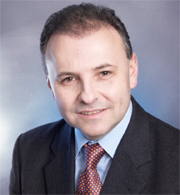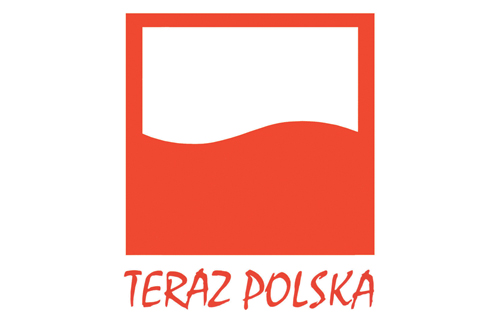The emblem appeared when Polish companies were ineffective and badly run, Polish engineering solutions were withering, and Polish products couldn’t compete with imports. The problem was not just the museum-like equipment, design definitely not moving with the times, archaic work organisation and obsolete management methods, but most of all it resided in people’s heads. The long agony of the communist economy, and a dramatic clash with the free market that followed, resulted in the fact that Poles stopped believing that it was possible to manufacture top quality products and provide advanced services in our country. Colourful imported goods were pushing out coarse domestic products out of shops, and newly established businesses were focusing mainly on trading in novelties imported from abroad. It could have seemed that Polish products would never be able to compete with foreign ones, not in Poland, and definitely not abroad.
Was it possible to imagine at the beginning of the transformations that in 20 years’ time the Polish export would exceed 200 billion dollars? Probably not, because then our export was 16 times lower, and – to make things worse – it was focused on raw materials and simple half-products. Was it possible to imagine that Poles would start to love again many products manufactured in Poland and that they would consider them better than the foreign ones? There was nothing to suggest it then.
Difficult beginnings
When in 1991 the idea arose of creating a Polish promotional emblem and the magical words Teraz Polska appeared at the beginning of 1992, our economy was really absolutely different than it is today. It had been undergoing difficult transformations for many months, which were to lead to the establishment of a modern market economy. However, this task turned out to be more difficult and painful than initially believed.
An honest evaluation of what happened at the beginning of 1990s requires recalling the events of the previous decade. Ever since the debt crisis in 1980 central planning remained only an empty slogan – no one was able to plan anything anymore. We entered the 1990s as a financial bankrupt, unable to pay for the past 10 years even the interest from our foreign debt. Cut off from foreign credits, our economy was incapable of generating funds for the most essential import. At the same time, the economic bureaucracy was completely disorganised and unable to cope with the difficult situation, and timid attempts of partial reforms brought no effects. The Polish zloty, if it ever had any real value in the history of the communist economy in Poland, at the end of the 1980s became a sort of uncovered voucher. And simultaneously the Polish private sector was still limited to some market niches created by the extreme ineffectiveness of state companies. When the true free market finally appeared, it turned out that quite a number of small private companies set up in the 1980s could not handle true competition and collapsed.
But nothing was able to match the knockout suffered by state companies in the first round of the fight with the free market. When as a result of liberalisation activities in January 1990 the borders opened, PLN became exchangeable, prices were deregulated, and the queues of customers for goods were liquidated, the country was flooded with commodities brought by train from West Berlin. In 1990 Polish consumers were hopelessly poor, and the imported products, although cheaper than in the 1980s, were still very expensive. In spite of that the Polish industry faced the spectre of death – it was largely unable to produce goods which customers would want to buy. In addition, when in 1991 the sales market created by the artificially maintained trade with the states of the Council for Mutual Economic Aid disappeared, it really seemed that Polish products would be soon only be found in museums and the phrase “Made in Poland” would be as dead as Egyptian hieroglyphs.
It was then, when Polish production was striving for its survival, the idea of the Promotional Emblem Teraz Polska appeared. First, the tried-and-true allies, appreciated for generations, entered the fight for the rebirth of the Polish brand – the winners of the first editions of the competition were, e.g. Wedel wafer layer cake, frying pans from Olkusz, Prince Polo wafers, “export” Żywiec beer (for years the object of desire of Poles, who – as the name itself suggests – were able to buy it only via “internal export”, meaning in currency shops).
Nevertheless, it soon turned out that more good had been going on in the Polish economy than it could have be expected, judging by shelves crammed with imported goods. Besides traditional products, soon new ones appeared, clearly able to sustain competition. Take the helicopter “Sokół”, the first herald of the Polish aviation industry renaissance, awarded in the second edition, or – interestingly enough – the washing powder Pollena 2000, worth noticing not so much due to its washing properties, but rather the advertising campaign that accompanied it. Probably for the first time the Polish origin of a product was not carefully hidden away, but instead it was treated as a feather in the cap, using the heroes of Sienkiewicz’s “The Deluge” in the commercial.
Success of the transformation
After the first shock, which definitely could be described as the time of constructive destruction, the economy started to accelerate, reaching a spectacular success as early as in the mid-1990s. At first with some hesitation, but then with more certainty, we started to suspect that Poles are a nation of businessmen. After we reached an agreement concerning the problem of the old foreign debt, a rapid stream of foreign capitals starting flowing to Poland. The stream soon turned into a multi-billion river of foreign investments. Modernisation processes rapidly accelerated. Nearly everything improved radically: our efficiency, modernity, production structure, competitiveness and level of openness. At the beginning of the 1990s we mainly exported traditional products, raw materials and the cheapest industrial products sold under a foreign brand, while at the end of the decade the largest Polish exporter was the automotive industry, and modern plants belonging to global concerns became one of the main driving forces of our economy. If at the beginning of the decade the country was completely on the outskirts of globalisation, over time we stepped on the path of more and more successful integration and growing competitiveness. Even though it was not the end of our problems, and the beginning of the 21st century was to see a period of recession and a painful second wave of company restructuring, it was becoming clear that the path taken at the beginning of the 1990s was leading towards modernisation, reducing the technological gap and gradually building our prosperity.
This process was reflected in the hall of fame of the Teraz Polska competition. New products and new producers were emerging, both those deriving from Poland as well as established from the ground up by foreign investors. Next to traditional industrial products, such as fuels and oils from Orlen or Lotos, construction equipment from Stalowa Wola or lathes by Rafamet, new Polish export and production specialties started to increasingly emerge: household appliances by Zelmer, Amica and Wrozamer, Kler and Swarzędz furniture, Fakro and Stolbud windows as well as Altas construction products.
Success … and further problems
The path of development, which during the last years has made Poland the most dynamic country in the continent, would not have been possible had it not been for our accession to the European Union. Poland joined the European Union in May 2004, symbolically finishing the over 50-year-long division of the continent into the “better” Europe – developing faster and securing high living standards for its citizens – and the “worse” Europe – lying east from the Iron Curtain. Our accession to the European Union was also the crowning and completion of the transformation process. More than ten years of reforms brought about an efficiently operating market economy in our country; an economy which was capable of rapid development not only in the years 2004-2008, when the world enjoyed its period of prosperity, but also capable of effectively facing the challenges posed by the global financial crisis. A faster development rate compared to West Europe made GDP per capita rise from 43%, the level observed in the states of the “old” Union in 2003, to 50% in 2008 and 60% at present. We still have a long way to go to reach the economic core of the world, which probably will last a couple dozen years, but its direction seems to be set. It does require further changes and further reforms, though, which could make Poland a more innovative country, whose development is more based on knowledge, new technologies and services with a high added value.
And such products are starting to appear among the winners of the Teraz Polska competition. Traditional alcohols and foods (like, e.g. “oscypek” cheese) – but sold with a much higher margin, are more often accompanied by advanced IT systems, new financial services, original technologies and telecommunications services.
Although many problems are still waiting to be solved, the last 20 years is definitely a period when Poland experienced enormous positive economic transformations. We have laid foundations on which rapid development in the decades to come will be possible. The Polish economy has been modernized, strengthened, stabilised and prepared to function in the conditions of globalisation. The typical company has changed from a low efficient state-owned company, afraid of foreign competition and insecure about its strengths, into a well run dynamic business from the private sector, ready for export expansion or development on the domestic market. A company whose brand is becoming better and better known and which evokes greater and greater respect.
There is no true economic development without our native businessmen, without our own brands, without our own business idea. And fortunately, such brands and such products have started to appear over time. And the promotional emblem Teraz Polska has contributed to it a great deal.
 Author: Professor Witold M. Orlowski – Polish economist, lecturer, director of the Business School at the Warsaw University of Technology, a member of the Economic Council to the Prime Minister and the main economic adviser of the PricewaterhouseCoopers Poland.
Author: Professor Witold M. Orlowski – Polish economist, lecturer, director of the Business School at the Warsaw University of Technology, a member of the Economic Council to the Prime Minister and the main economic adviser of the PricewaterhouseCoopers Poland.
The Foundation of the Polish Promotional Emblem „Teraz Polska”



